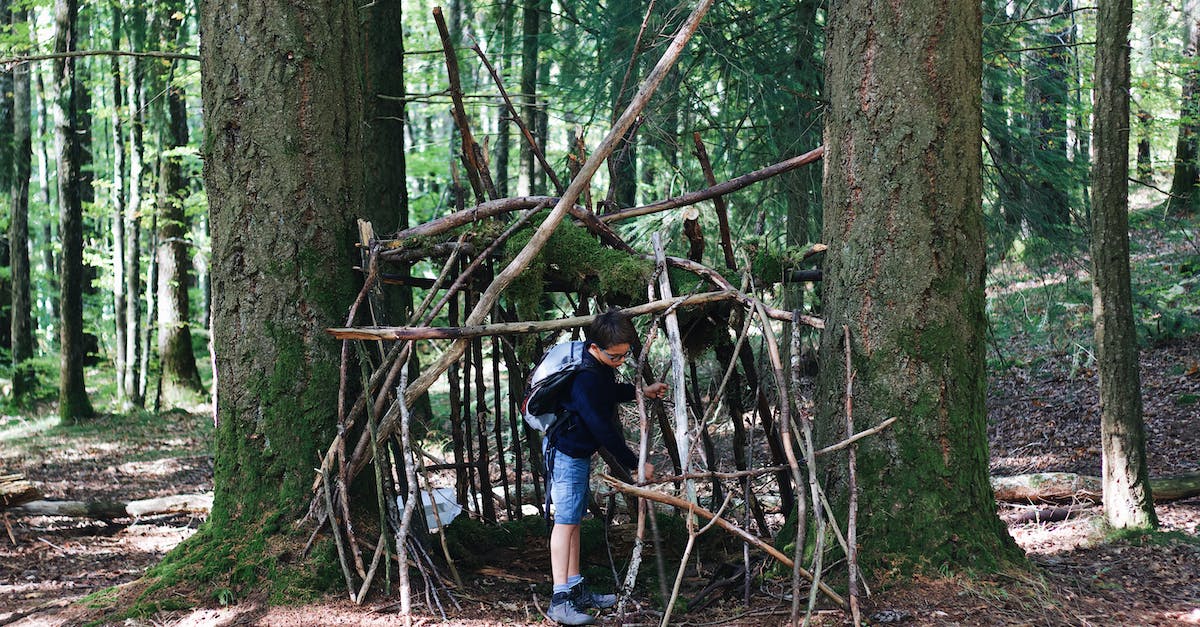This site contains affiliate links to products. I may receive a commission for purchases made through these links.
Ever dreamt of having your own personal window to the cosmos? I’ve been there, and I can tell you, it’s not as far-fetched as it sounds. Building an observatory shelter in your own backyard is a project within reach for any astronomy enthusiast.
In this guide, I’ll walk you through the steps needed to construct your own star-gazing sanctuary. From choosing the right location to picking the perfect telescope, we’ll cover it all. So, whether you’re a seasoned stargazer or a beginner in the world of astronomy, this guide is for you. Let’s turn that dream into a reality, shall we?
Choosing the Right Location
When it comes to establishing your own observatory shelter, knowing where to build it is just as crucial as knowing how to build it. Let’s delve into some key considerations you need to keep in mind to select the perfect spot.
The first thing you want to think about is light pollution. Building your observatory in an area that’s heavily lit at night can seriously hamper your stargazing efforts. Cities and suburban areas, with their dense populations and abundant street lighting, may not offer the ideal conditions for observing celestial bodies. Look for an area with minimal artificial light. This could be a backyard in a rural area or even a rooftop in a quieter part of the city. I’m not proposing everyone move to the countryside – I’m merely suggesting, for the best results, try to find a location that’s away from large concentrations of light sources.
The second point to consider is the surrounding landscape. You’ll want an unobstructed view of the sky. Tall buildings, trees, or hills can block portions of the sky and limit your observation potential. That means the flatter the terrain, the better.
The final aspect to consider is how accessible your location is. Building your observatory on the top of a remote mountain might provide spectacular viewing conditions, but if it’s a hassle to reach, you might not use it as often as you’d like. Choose a location that’s easy to access easily and can accommodate the necessary equipment.
Let’s address the elephant in the room – not everyone will have the luxury of choice. You might be limited to your own backyard, which could mean dealing with city lights and neighbor’s trees. Don’t fret! There are still ways to maximize your stargazing even in less-than-ideal conditions. This is where clever design and building materials come into play, but that’s a topic for the next section.
While these considerations won’t guarantee a perfect view of the cosmos every time, they’ll go a long way to ensuring you get the most out of your backyard observatory. Establishing the perfect space for your stargazing sanctuary starts with careful consideration and smart planning.
Planning and Designing Your Observatory Shelter
Having identified the perfect spot for your shelter, it’s now time to take our discussion towards the planning and designing phase. Choosing the correct design will greatly impact your stargazing adventures, and it isn’t a task to rush into.
As we navigate through this process, I’ll guide you through a few key aspects that are crucial while designing your backyard observatory.
Firstly, consider your equipment needs. Your shelter should be big enough to comfortably house all your astronomical equipment while also providing enough space for you to move around. Take measurements of the space requirements of your telescopes, mounts, and other accessories.
Next, think about your comfort. Your observatory should be a place where you can relax and enjoy your stargazing expeditions. Make sure to include arrangements for seating or standing. You may also want to consider things like heating or cooling, sound insulation, and accessibility for others, especially if you plan to share your passion with friends or family members.
Then, pay attention to the orientation of your shelter. Predominantly, this decision is guided by the direction your telescope will be pointing most often. Often, astronomers prefer to have their shelter opening face North to follow the rotation of the Earth.
After all this, it’s time to move into the details of construction materials and techniques. This will vary depending on personal preferences and local weather conditions. Still, it’s worth noting that using darker materials that don’t reflect light can help minimize any potential light pollution from your observatory.
While these might seem like a lot of factors to consider, remember, the goal here is to create a haven for your astronomy passion. Taking the time to think through these aspects and integrating them into your planning and designing process will surely give you the observatory shelter you’ve dreamed of.
Gathering the Necessary Tools and Materials
After we’ve carefully planned and designed our backyard observatory, the next step is important – gathering our tools and materials. This stage requires careful thought to make sure we don’t overbuy, but also ensure that we won’t miss a thing when construction time arrives.
You’ll likely need different tools for varying aspects of the construction. A basic list might include a saw, hammer, measuring tape, drill with bits, wrenches, pliers, screwdrivers, and staple gun. Rent or buy? If it’s a tool you’ll use again, it might be worth investing in. Otherwise, renting can save a bit of money.
In terms of materials, you’ll need wood or metal for the structure and walls. Dark, non-reflective materials are key for minimizing light pollution. Insulation is vital for those colder nights when you’re out stargazing. You’ll also need screws, nails, hinges, and other hardware for assembly.
Let’s not forget about the main attraction – the telescope! The materials required for this will depend on the type and size of telescope you’re planning to have. For a starter, I’d suggest a Dobsonian telescope: affordable, simple, and perfect for beginners.
Remember, safety is important. During the construction phase, always keep a first aid kit handy just in case accidents occur.
What about costs? To give you a rough idea, here’s a basic breakdown:
| Item | Average Cost (USD) |
|---|---|
| Tools (buying basics) | $100 – $200 |
| Building materials | $300 – $500 |
| A Dobsonian telescope | $200 – $400 |
| Safety kit | $20 – $50 |
| Total | $620 – $1150 |
This is a rough estimate, of course. Prices can vary widely depending on your location, the quality of materials you choose, and the type of tools you decide to get.
Moving forward, let’s begin our journey of constructing a haven for astronomy lovers. Every step we take will bring us closer to the night sky, to the constellations, and to knowledge. The excitement building up is real; I know you feel it too.
Constructing the Foundation and Framing
Building a solid foundation is crucial for constructing a backyard observatory. The foundation forms the base of the building, providing the stability needed for accurate observations. It’s also the first step in constructing the frame
Start by mapping out the dimensions of your future observatory. Use pegs and strings to outline the area, ensuring it’s square and level. If you’re placing the observatory on grass, it’s key to remove the sod before beginning construction.
Next, you’ll need to dig a hole for the foundation. This doesn’t need to be overly deep – around 12 inches will do. Then, compact the dirt at the bottom of the hole using a tamper. This prepares the ground for the concrete that will form the foundation.
When the hole is prepared, it’s time to create a wooden mold for the concrete. The exterior dimensions of the mold should match your desired observatory dimensions. Inside this mold, place a layer of gravel for added stability.
Using a pre-mixed concrete solution, pour the mixture into the mold. Make it level and smooth using a screed and trowel. Once the concrete is poured, you’ll need to let it cure or harden. This process typically takes up to a few days depending on the local climate.
While the base is drying, we can now start thinking about the frame.
Wood is a popular option due to its easy workability and abundant availability. Large beams are preferable for the vertical uprights, providing superior strength and stability.
For roofing, you’ll have to divide the top into two parts – a fixed part and a rotating section. The roofing structure requires smaller beams as this part needs to be lighter in weight to enable easy rotation. Attach the beams to the foundation using strong, sturdy brackets and bolts.
Installing the Roof and Walls
Having touched on the foundation and framing, it’s time to move to the next crucial stage of your backyard observatory construction: Installing the Roof and Walls. These elements are vital, not only in protecting your equipment from outdoor elements but also in ensuring the effectiveness of your astronomical observations.
For the walls, I recommend using insulated wooden panels. Easy to install and durable, these give great thermal control – crucial in maintaining a steady environment for your equipment. To install, simply fix the panels to our previously installed beams using screws or nails. It’s essential for these to be weather-resistant to ensure longevity. Weather stripping around the joints can add an extra layer of protection against the elements.
Now for the roof. The design will hinge on the type of roof you desire: a rolling off roof or a dome. The former is the simplest, most cost-effective choice, allowing the entire roof to slide off, granting a 360-degree view of the sky. A dome, more complex and costly, limits the view but does provide excellent wind and light protection.
If you opt for a rolling off roof, it will require a system of casters and tracks, installed at the top beams of the observatory. To ensure smooth motion, you’d use a combination of metal tracks and rubber casters, adjusted rightly to carry the weight of the roof – which can be substantial. For our dome enthusiasts, you’d install a rotation system with an assembly that allows the dome to pivot. Both systems demand precision and functionality.
In both instances, the choice of roofing material also matters. Some options include wood, metal, or even higher-end composite materials but noting that it must be durable, waterproof, and able to withstand weather elements.
If all is done correctly, your observatory should now have a strong, effective shell ready for the next steps – the installation of an entrance door, ventilation systems, and the all-important telescope mounts and housings. That sets the stage for our next discussion.
Finishing Touches: Painting and Insulation
Our journey to create the ultimate backyard observatory shelter continues. We’ve installed the roof and walls and now it’s time to make this structure not only functional but aesthetically pleasing as well. Painting your observatory shelter is a fun and rewarding step. It not only beautifies the structure but also provides additional protection from the elements.
Before you swing that paintbrush, remember to choose a paint that’s both weather-resistant and dark. The dark walls help reduce light reflection inside the observatory contributing to better observations. As for favorite paint brands, it’s best to look for ones specifically formulated for outdoor use.
Insulation is Key
Equally important, and sometimes overlooked, is insulation. Insulation will make your observatory shelter more energy-efficient and comfortable to use. The most popular insulations used for this purpose are foam board and batt insulation. Here’s a comparison of the two:
| Insulation Type | Pros | Cons |
|---|---|---|
| Foam Board | High R-value per inch, easy to install | More expensive, not fire resistant |
| Batt Insulation | Relatively inexpensive, fire resistant | Lower R-value, harder to install |
You’ll also want to insulate the roof. Mirroring heat away from your telescope is vital as it can cause distortion in your viewing.
Last Elements: Door, Ventilation, and Mounting
Let’s wrap up this phase of our project by installing an entrance door that’s both solid and secure. After that, we’ll venture into setting up a proper ventilation system. This system will keep the interior temperature regulated and prevent any condensation build-up that could potentially harm our equipment. Secure telescope mounting and housing will be our final tasks in this journey of building our own backyard observatory.
Remember! We’re building this observatory for the love of stargazing, and our journey doesn’t end with the construction. The real joy begins when we start observing the cosmos from our own backyard.
Setting Up the Telescope and Equipment
With the structure and finishing touches out of the way, it’s time to introduce the real star of your backyard observatory – the telescope. First off, careful handling is key. While setting up your telescope, remember this marvel of optics is a delicate instrument that requires careful and precise handling.
Majority of backyard astronomers prefer reflector telescopes. Their key benefit lies in sourcing good resolution for viewing distant celestial objects. A Dobsonian telescope, a type of reflector telescope, is a great starting point for many star gazers. It’s particularly praised for its simplicity and efficiency.
Here’s how the two popular types compare:
| Telescope Type | Light Gathering Power | Cost | Ease of Use |
|---|---|---|---|
| Reflector | High | Low | Moderate |
| Dobsonian | High | Low | High |
Next up is the housing and mounting for the telescope. These aspects are crucial to ensure your telescope remains secure and functional in all weather conditions. A quality mount is a necessity – it stabilizes your telescope, reducing the risk of bumps or shifts, which would disrupt your observations.
Given the variety of telescope mounts available, the choice largely depends on your needs. If you plan on extensive deep sky observations, a motorized equatorial mount would be your best bet. For casual sky watching, an Alt-Azimuth mount should suffice.
Remember, it’s not just about the telescope. There are other key pieces of equipment necessary for a successful night of stargazing. Auxiliary equipment such as eyepieces, filters, and star charts can immensely enhance your astronomical observations. Also, don’t forget the instances when you’ll need adequate lighting. Red LED lights preserve your night vision while providing you with sufficient light inside the observatory.
With all your equipment set up, you’re now ready to begin your voyage of celestial discovery in the comfort of your very own backyard observatory. But don’t stop here! There’s still a lot to learn and experience in the expansive world of amateur astronomy.
Conclusion
Building an observatory shelter isn’t just about setting up a telescope in your backyard. It’s about creating a space where you can explore the universe, right from your own home. Remember, the right equipment makes all the difference. From choosing a Dobsonian telescope to finding the perfect mount, every detail matters. Don’t forget those essential extras like eyepieces, filters, and star charts. And of course, lighting is key – red LED lights are your best bet. It’s a fantastic journey, one I’m sure you’ll enjoy. So, here’s to clear skies and a world of celestial discovery ahead!
How do I set up a telescope in my backyard?
Setting up a telescope requires careful handling. Start by finding a good spot in your backyard, then assemble the telescope and equipment according to the manufacturer’s instructions. Always remember to handle the optics with care.
What are the benefits of reflector telescopes?
Reflector telescopes, including Dobsonian telescopes, offer numerous benefits. They are known for their superior light-gathering abilities, providing clearer and more detailed images of celestial objects.
Why do I need a high-quality mount for my telescope?
A high-quality mount is crucial for maintaining your telescope’s stability, which directly impacts the quality of the imagery. A shaky or unstable mount can make the view jumpy and difficult to focus.
What auxiliary equipment do I need for my telescope?
Auxiliary equipment such as eyepieces, filters, and star charts can significantly enhance your stargazing experience. Eyepieces provide magnification, filters aid in viewing certain celestial bodies, and star charts help in locating different stars and constellations.
What kind of lighting is suitable for amateur astronomy?
Red LED lights are highly recommended for amateur astronomy. They provide adequate lighting while preserving your night vision, making them perfect for observing the night sky.
What’s the conclusion of this article?
This article encourages readers to continue exploring the world of amateur astronomy and emphasizes the joy of celestial discovery that comes with setting up your own backyard observatory.




